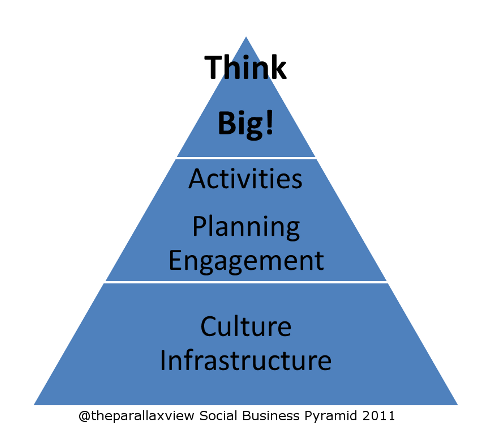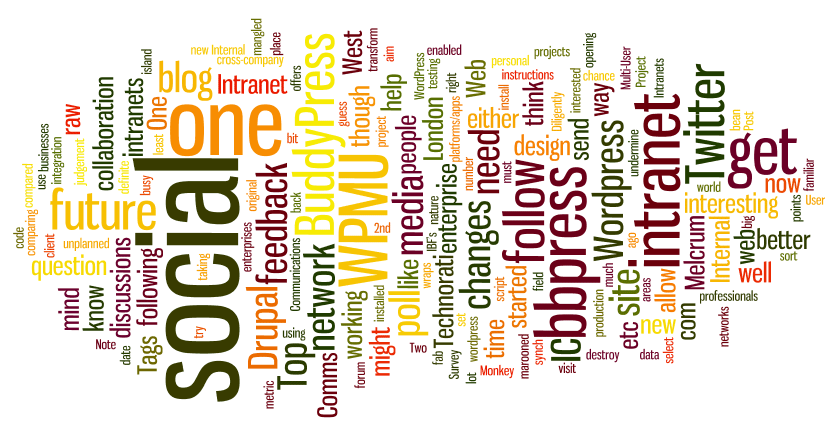A couple of posts caught my eye this week, both on the consumer web, specifically Facebook and each all about business performance and the bottom line. From Forbes we had Here’s Why Google and Facebook Might Completely Disappear in the Next 5 Years and from WSJ The Big Doubt Over Facebook.
The latter article went over some old ground namely, does Facebook actually deliver its bang for bucks or as WPP’s* Sir Martin Sorrell put it:
“..clients, for the very first time, are starting to question the measurement issue” [on social media.] “The area is a very sexy area, and clients have gone in almost willy-nilly, because it’s fashionable to do so,” But now that such ad spending has ramped up, he said finance departments “are increasingly starting to look at the value of those investments.”
Time on this will tell. Which takes me neatly to the Forbes piece. In sum, given the pace of change, it asks if the giants of Google and Facebook be around in five years time, or will they be gone in the sense of MySpace gone?
Anyone who has read In Search of Stupidity knows that this isn’t a stupid question to ask. The Road to Hell is filmed with a Kodak.
But then, what of the Enterprise Social Market? Or put another way, which of them is currently selling the equivalent of dBase? Or perhaps more pertinently, what would a newcomer need to completely disrupt and dominate this market? If we look at the Forbes piece, the argument there is that there have been 3 generations of consumer web tech
- Web 1.0 (companies founded from 1994 – 2001, including Netscape, Yahoo! (YHOO), AOL (AOL), Google (GOOG), Amazon (AMZN) and eBay (EBAY)),
- Web 2.0 or Social (companies founded from 2002 – 2009, including Facebook (FB), LinkedIn (LNKD), and Groupon(GRPN)),
- and now Mobile (from 2010 – present, including Instagram).
And here’s the punch line:
With each succeeding generation in tech, it seems the prior generation can’t quite wrap its head around the subtle changes that the next generation brings.
Thus there’s no ‘Web 3.0’ the web is no more and as example, Instagram simply side-stepped the web and went directly to the mobile app. Now if, and I grant it’s an if, the enterprise social world follows the wake of the consumer ‘web’ does this mean that the next generation of Enterprise 2.0/Social Business vendors should do the same and jump right into mobile and ignore the intranet? My answer is not necessarily, but I think Forbes puts the finger on the salient point, in order to win in these changing markets, new paradigms need to be invented, not old ones re-made. But while consumerland tech might be a fresh new ‘greenfield’ in which fortunes are to be made for those who reinvent it, is this the same for it’s industrial buddy, that of E2.0?
To my mind the market is still wide open, but the starting stakes are much much higher. There are no E2.0 Instagrams, though there’s plenty of wannabees. Jive Software, the leaders at least in terms of waves and magic quadrants has an IPO that is far more modest than those mouth watering offerings of Consumer. To sell in the industrial market takes clout, real clout not spelled with a K. The old caveat about no one ever losing their job for buying IBM still holds in social business – IBM’s Connections works and they have massive industrial back-up to support it.
And yet and yet, the market is still wide open. It’s wide open to those who can simultaneously re-invent the paradigm ‘E2.0’, support it, their customers (and at an industrial level) and themselves and their employees. No easy task and I’ve no idea what sums are needed here, logistically or financially. Added to that the innate conservatism of many businesses (the cause of many a downfall in itself) – the traditional intranet and Internet Explorer are not going to be replaced that quickly for example.
Or will they? Maybe the paradigm shift we’re going to see in how we work is the end of the Office, it’s structures, nineteenth century politics and its desks. Those lines of desks – in Victorian rows or postmodern chaos, are still an old paradigm.
Or maybe something very different, the black swan. My gut feels is tech around flows, streams and activities that are sticky to both the activities and where a person is. So Mobile yes, most likely, but mobile in the sense of mobile devices, mobile work flows and mobile people. What this means are flows of activities that move with the worker. Streams that can be stuck onto specific activities and that move when the work, people or flows change.
Flows, streams, exchange – liquid collaboration.
‘sticky streams’. You heard it here 1st.
* Disclaimer – I’m contracting at one of their companies, all thoughts my own.



